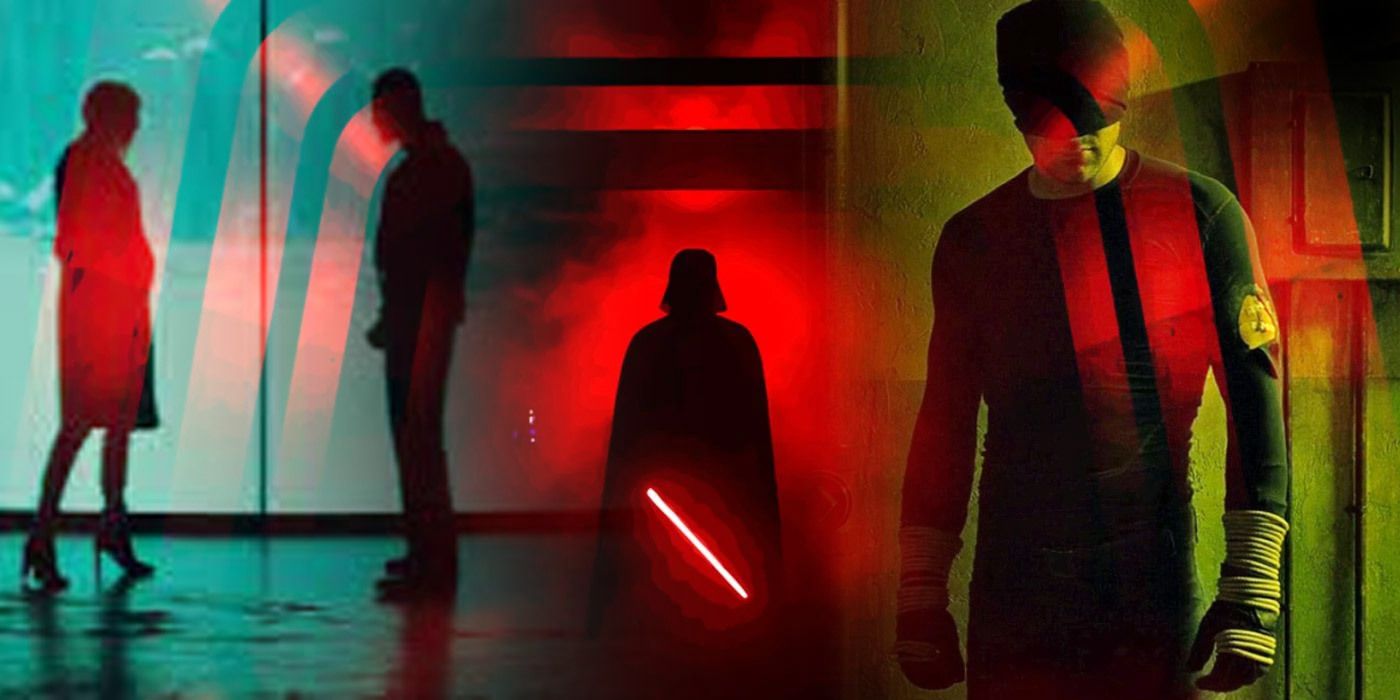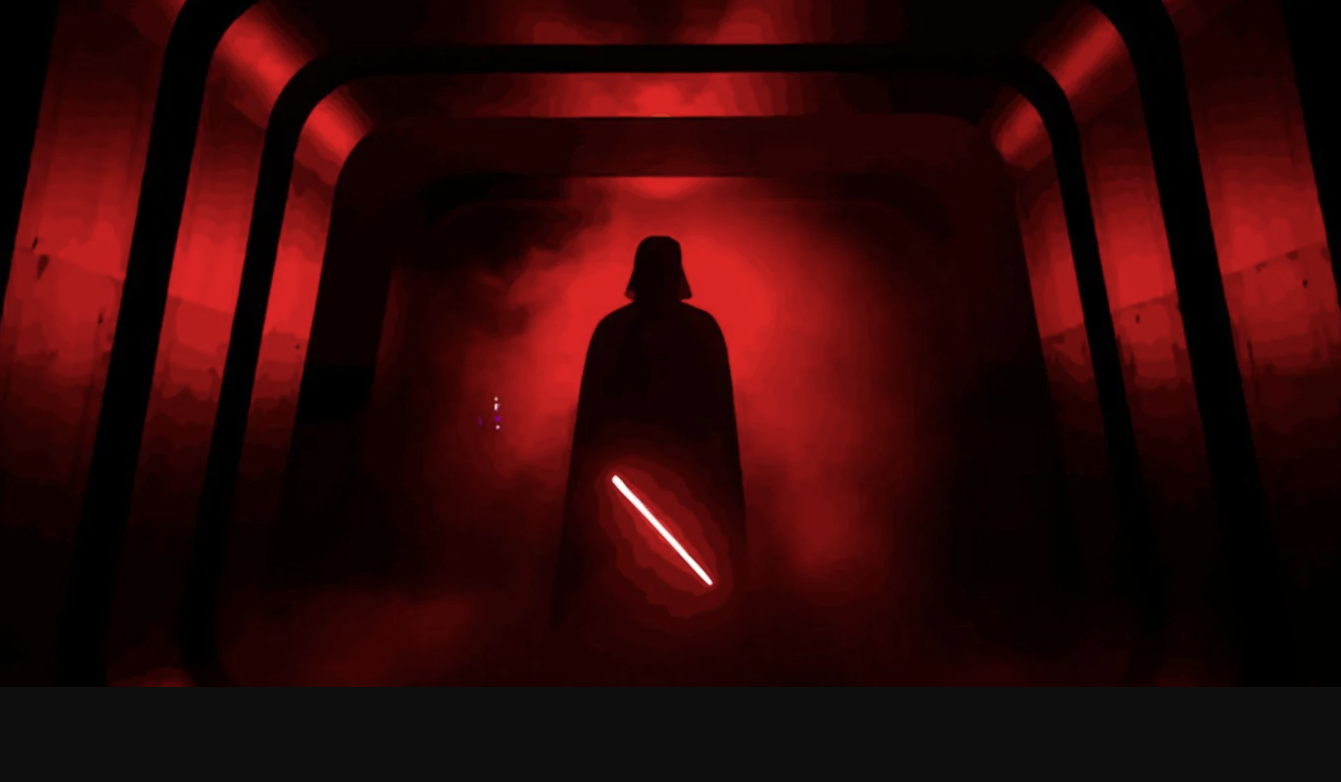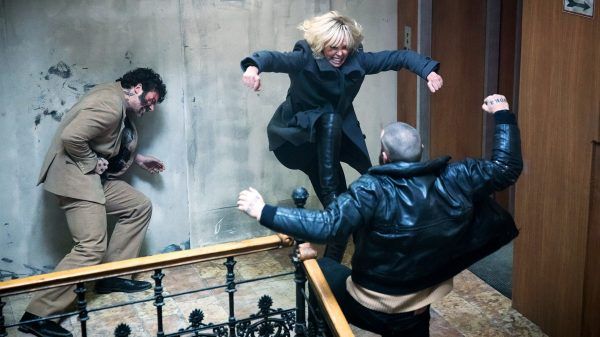The ending of Rogue One: A Star Wars Story was truly something special to see on the big screen. After Jyn Erso (Felicity Jones) and the Rogue One crew pay the ultimate price for stealing the Death Star plans, the Rebels rush to launch the Tantive IV as quickly as possible. Their success hangs by a thread. When the lights in the airlock go out, the sound of mechanical breathing fills the corridor and a red plasma blade ignites. The "Darth Vader vs. the Rebels" free-for-all that follows is not just one of the best fight scenes in the Star Wars saga, but one of the best "hallway fights" ever assembled.
That's no small feat, as, in recent years, the hallway fight has become pop-culture staple, appearing in some form or fashion in a number of action-based movies or TV series. Star Wars itself has made use of this tool more than once after Rogue One, pitting Luke Skywalker (Mark Hamill) against an entire Imperial Light Cruiser full of Dark Troopers in The Mandalorian and having Darth Maul (Sam Witwer) stomp through a whole division of Clone Troopers in Season 7 of The Clone Wars. And it's not just the Star Wars franchise employing narrow corridors to great effect, as everyone from Christopher Nolan to the powers-that-be at Marvel have used hallway fights to excite their audiences.
That excitement might partially come from the knowledge that a good hallway fight cannot be easy to shoot. There's not much physical space for the filmmakers and actors to work with, requiring choreography and camerawork that's both creative and in constant sync. That difficulty factor, combined with the fact that, in typical hallway fights, the hero of the scene (or, in Vader's case, villain) is often vastly outnumbered, creates a strong feeling of tension for the audience. In terms of storytelling, the tight space and overwhelming numbers of enemies create an overwhelming challenge for the main character while also giving them only one course of action -- to fight their way straight through. It forces them to tap into their most basic instincts, highlighting their traits both as people and warriors.
There are tons of recent examples of how impressive hallway fight scenes can be. The "Cut Man" episode of Daredevil finds Matt Murdock (Charlie Cox) on a mission to rescue a kidnapped boy from the hands of the Russian mob. In order to do that, though, he first needs to get through a whole squad of gangsters. The entire sequence takes place in a cramped-up hallway inside a building. The scene is designed to look like it was shot in one take with no obvious edits -- the camera sharing the same space the brawlers have to move -- which puts the audience right in the middle of the action. The fact that it happens at the very end of the episode, after we've seen all of Murdock's failings and all he and his father have gone through in life, gives the scene an extra flavor: The protagonist gets his redemption by saving the boy -- an allegory for his younger self.
In David Leitch's Atomic Blonde, Charlize Theron's MI6 agent Lorraine Broughton faces a similar challenge while protecting Eddie Marsan's Spyglass, but with two main differences: She's in a stairwell, and she's going up against armed KGB thugs. Once again, the camera moves through the gaps created by the physical movement of the characters, always re-focusing on Lorraine after one of her enemies falls, as if to check to make sure she's okay before moving on. The presence of firearms poses an extra danger, as just one wrong step could result in someone dying. The whole sequence lasts 10 exhilarating minutes, capping everything with a brief car chase at the end.
Naturally, the hallway fight only works if it's carefully woven into the overall narrative. Darth Vader cutting through the Rebels on Rogue One would not carry the emotional weight it does if we hadn't seen what it cost to get the Death Star plans to the Tantive IV. By the end, it's already well established that the movie is about how hope outlives sacrifice, and we just know every Rebel soldier in that hallway is willing to match Jyn's heroism. Without that, the whole sequence would just be there for the sake of the visuals and to satisfy thirsty fanboys.
Hallway fights can also be used to make explicit the virtues or vices of a character. Hallways only serve one practical function: connecting two different rooms and allowing someone to get to the other side. This environment, when serving as the setting of a fight, can bring out the best -- or worst -- in a character. In Park Chan-wook's Oldboy, protagonist Oh Dae-su (Choi Min-sik) is on his path of vengeance against the people who took so much from him, but he also understands the thugs in front of him are not his true enemies. He asks his assailants to take one of their own to the hospital before the fighting begins, showing a level of compassion: He has no intention of killing any one of them ... but he will if he's forced to.
Hallways may feel like simple, almost dull spaces to stage a movie fight, but filmmakers are often able to get creative, using these confined spaces to their advantage. For example, Oldboy follows Oh Dae-su's movements from a strictly horizontal perspective, similar to a two-dimensional videogame, which depicts the only directions available to him -- forwards or backwards. Another good example is Nolan's Inception, which sees Joseph Gordon-Levitt's character put into a hallway located in a kind of centrifuge, which creates an unstable, dream-like setting (which is completely fitting for that movie, of course). Some action scenes that might classify as hallway fights don't even take place in an actual hallway but rather occur in other types of small, narrow spaces that serve as their own variation on the trope. In Captain America: The Winter Soldier, for example, we have Steve Rogers (Chris Evans) taking on a squad of Hydra goons in an elevator. And, if you think about it, what is an elevator if not a type of vertical hallway that moves between floors?
As it stands, there's no sign that hallway fights are going to go out of style any time soon, as filmmakers keep finding new ways to combine storytelling and choreography to create stunning close-quarters action sequences. And there's no doubt that, right now, there's a filmmaking team out there planning how to take hallway fights to the next level.



